Motorola Defy Mini Review
Motorola Defy Mini
Compact and rugged, is this the ultimate camping phone?
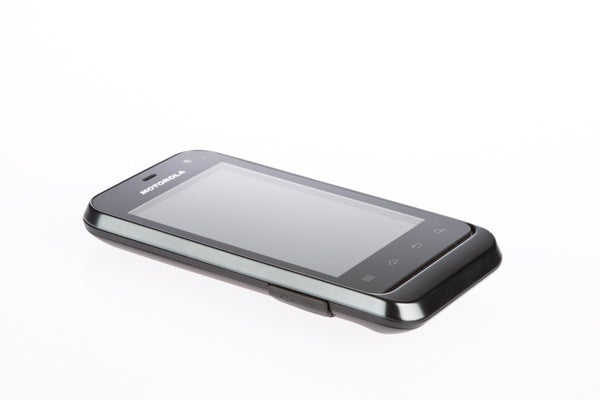
Verdict
Pros
- Relatively rugged build
- Compact Design
- Some nice 'outdoorsy' software tweaks
Cons
- Not waterproof!
- Not much smaller than Defy+
- Slow processor
Key Specifications
- Review Price: £150.00
- 3.2in HVGA Gorilla Glass screen
- Scratch and water resistant; dust-proof
- Outdoor Dashboard app
- Android 2.3.6
- 3megapixel camera with LED flash
Motorola impressed us a year or so ago when it introduced the Defy. It was a rugged, waterproof smartphone that actually looked quite sleek and had all the smartphone essentials. It then followed this up with the slightly faster Defy+ at the tale end of 2011, and we liked that model too. Now it’s expanded the line further with the Defy Mini, which is a smaller even cheaper version available for around £150. But while Motorola has got some things right, this handset is also deeply flawed.
Waterproofing and Toughness
Perhaps the biggest failing of the Defy Mini is that it isn’t all that tough, or more specifically waterproof. Where the original Defy could survive a dunking, it would appear from our testing that the Defy Mini cannot. The key here is that the Defy was rated to IP67, which means it is completely sealed against dust and can survive in up to metre of water. On the Defy Mini, however, this official stamp of approval has disappeared.
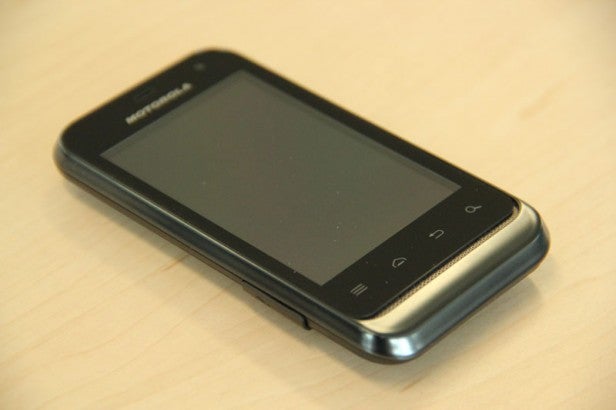
Not at first realising this we put the phone to the same mild dunking test as we did with both the Defy and Defy+, and the result was a rather soggy phone – inside and out. After drying the phone out all seemed well until we tried to interact with the touchscreen, whereupon it simply failed to respond.
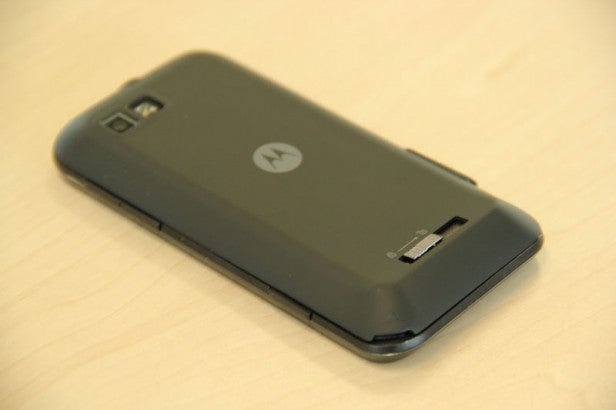
Clearly this is a little embarrassing for us, as we didn’t read the small print, but it’s a worse situation for Motorola. The distinction on Motorola’s website between the toughness of the Defy Mini and its larger siblings is absolutely minimal and the page title of the official site proudly proclaims the phone water-resistant, so the likelihood many punters will mistakenly buy this phone thinking it offers the same protection as the Defy and Defy+ seems high. The result? Potentially many unhappy customers.
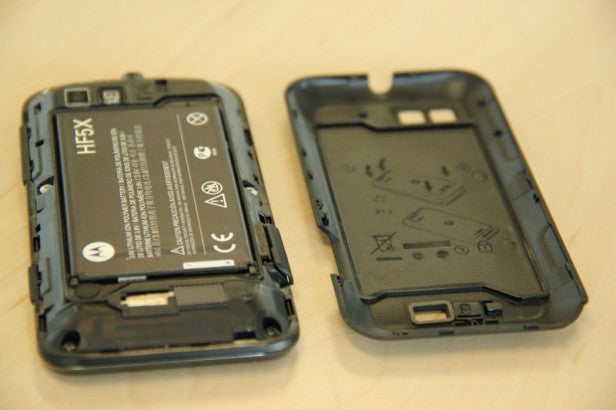
So perhaps the key question is just what ”can” the Defy Mini survive? Well, it doesn’t have an official IP rating that we know of so it’s hard to nail down but we would hazard that this device actually conforms to the IP65 standard. This infers the device is resistant to jets of water hitting the phone from any angle, but not complete submersion. Essentially, it’s rain and shallow puddle proof – not a device for taking kayaking.
As for its actual toughness, the body is finished in rugged plastic that certainly seems capable of surviving a few bounces on concrete. The battery cover also has a latch, which should prevent it flying off and exposing the innards when dropped. The final piece of the puzzle is that the screen uses scratch and crack resistant Gorilla Glass.
Design and Features
So the Motorola Defy Mini isn’t the toughest phone in the world but otherwise it just about fits the camping-phone bill. It is indeed smaller and lighter than your average handset, making it perfect for keeping your camping clobber as small and lightweight as possible. It’s also potentially easier for children to handle, so if you’re looking for a cheap, tough phone that’ll survive play time in the sand pit, it’s a possible option. That said, it is actually 2mm taller than the Defy and Defy+, so presumably its mini claims come from the fact it’s 0.8mm thinner.
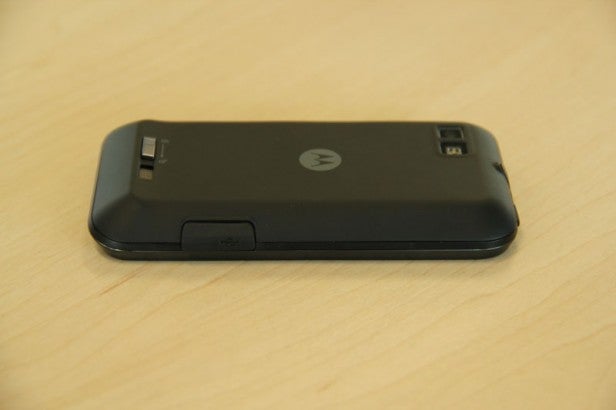
Style wise, it’s not ugly but hardly inspiring either. It’s a device of function, not form.
Round the sides, completing the rugged credentials are rubber flaps covering the headphone and microUSB ports. It’s a bit of a pain having to flip these out the way all the time to plug in your headphones or put your phone on charge but needs must. Elsewhere you’ve got a 3megapixel camera on the back with an LED flash, and there’s even a hardware button on the side for taking snaps. You also get volume buttons on the left and screen lock/power on the top edge. As the phone’s small it’s nice and easy to reach all these controls and the full expanse of the screen, which is more than can be said for most phones these days.
One let down here, though, is the use of touch buttons underneath the screen. These work well in normal conditions but can become a bit sporadic in the wet, as indeed can the touchscreen (even when still working). The larger Defys also suffered with this but the Sony Ericsson Xperia Active gets round this, so that may be your best choice if this is a major concern.
Screen
Where this phone most immediately shows its low cost is in its screen. At only 3.2in across, it’s quite small, and moreover looks particularly tiny thanks to the large bezel surrounding it. Its is however a reasonably sharp display thanks to its iPhone 3G equalling 320 x 480 pixel resolution. Nonetheless, this is a display that’s more suited for important phone duties than the multimedia side of things.
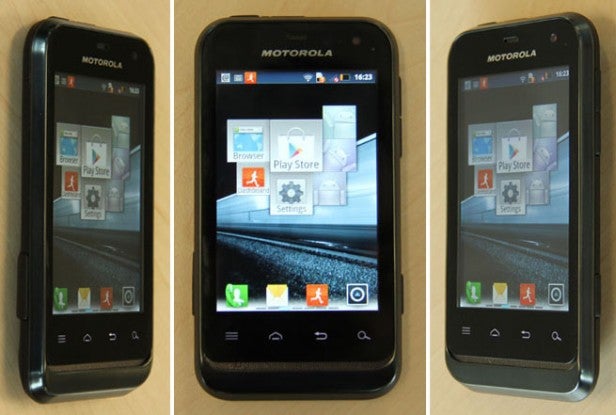
Need to find out where you are on GoogleMaps, want to lookup the local restaurant’s website or drop the AA a call when broken down in the middle of the peak district? This phone and its screen will suffice, but if you’re looking for something that’ll entertain you while backseat-driving en route to your destination, you may find it coming up short – watching video and playing games that use onscreen controls aren’t all that much fun. That said, it will stretch to making the odd YouTube clip, a catchup on Facebook and Twitter, and a read of mobile-optimised websites reasonably enjoyable.
For an LCD, viewing angles are good and overall colour reproduction is decent too. We found it reasonably easy to view in bright conditions but it’s by no means the best in this regard.
Interface & Performance
The third big hurdle here is the performance of this phone. With only a 600Mhz processor onboard, it is pretty sluggish. This flips between being acutely annoying and reasonably tolerable, so overall we’d say you’d cope, at a push.
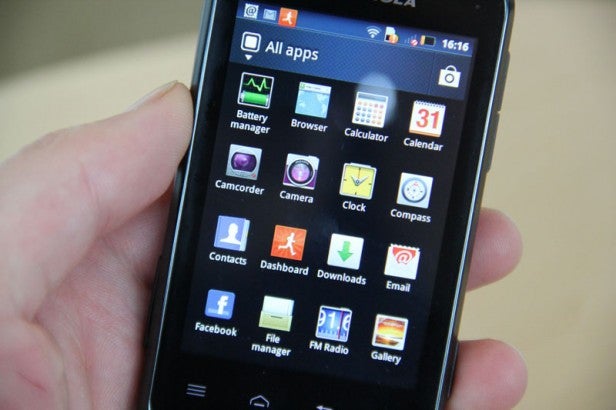
Most of the time you just need a little bit of patience while some apps take a moment to load, or you need to be careful not to be overly zealous scrolling through a long list, as you may need to wait for the phone to catch up. However, on the odd occasion – particularly if there’s a hefty app running in the background – it can slow to a crawl. Probably the toughest challenges are graphically rich websites, which can cause the phone to become very unresponsive as you try to scroll around and zoom in and out of them.
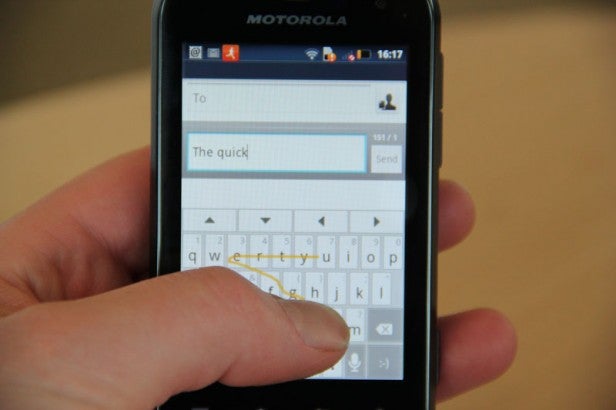
Otherwise, though, Motorola has done a good job of optimising this handset to suit its intended purpose. While the screen may be small, Motorola has made the keyboard easy to use by preinstalling the one-finger swiping keyboard, Swype. This is one of the few times we’ve really felt this keyboard significantly improves the typing experience over a normal touch keyboard, as the small screen makes normal typing a struggle – using Swype is easy, though.
You also get a neat activity app called the Instrument Dashboard that
provides a one-stop solution for all your jogging needs. Open the app
and you’ve instant access to a run logger, which at the tap of a button
uses the phone’s inbuilt accelerometer to guestimate the number of steps
you’re taking while also tracking your route via GPS. By also inputting
your height and weight the app can guess as to how many calories you’ve
burned.
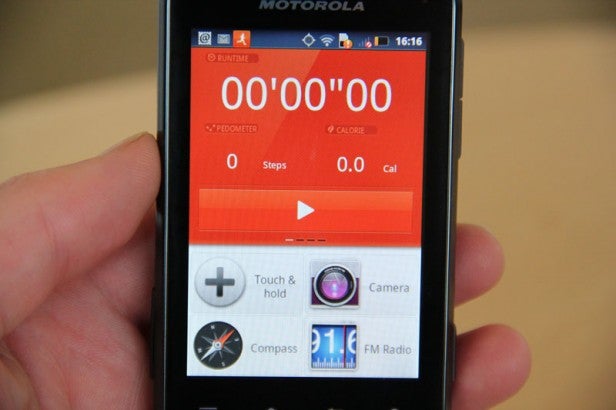
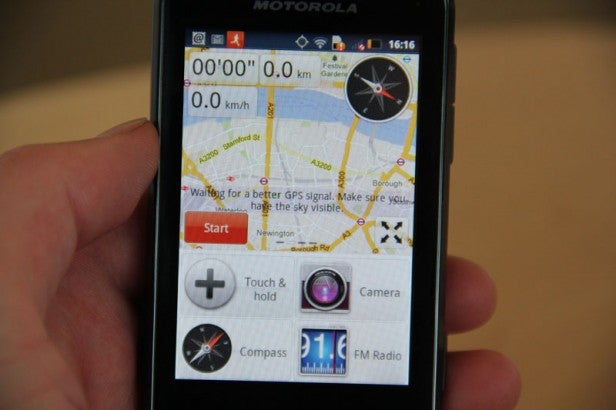
Swipe across the top portion of the screen and you can view a map of
your run, get quick access to a music player and view the weather, while
below are four spaces to fill with quick links to your favourite apps.
By default these come filled with a sensible selection of the camera,
compass and FM Radio.
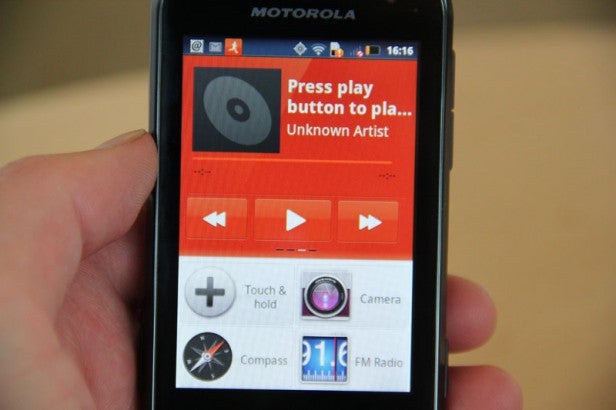
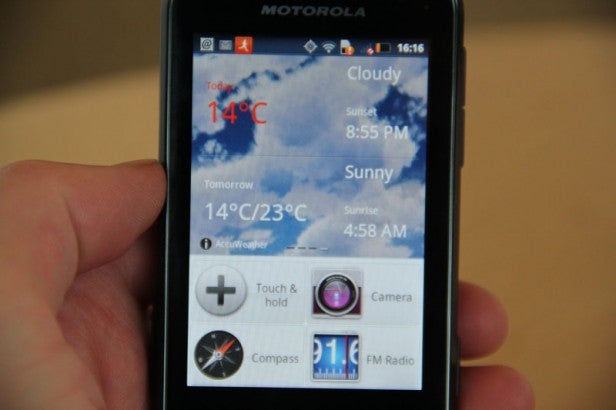
All told it’s a nice little addition. However, anyone that’s already using another app, or that does more than running is probably better off sticking to what they know or using a 3rd party app. We use RunKeeper but there are plenty more that work alongside extra accessories.
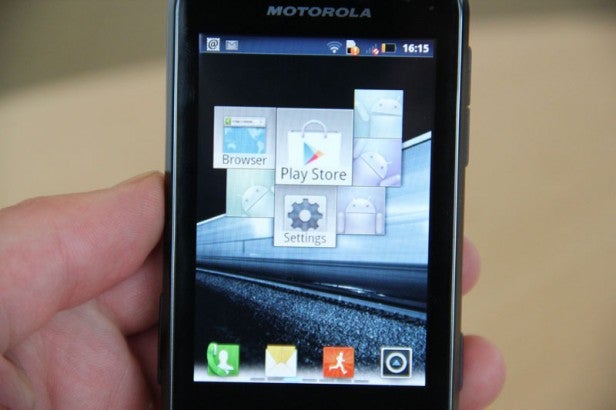
Apparently I like the App Store
A final Motorola addition of note are the popular contacts and apps homescreen widgets. These track your most frequently used contacts and apps, presenting them as a spiral of descending popularity with the most popular sitting centre stage. They’re quite useful if you don’t like to keep your phone’s apps rigidly organised.
Aside from the Motorola extras, the interface is pretty standard Android 2.3. So in terms of capabilities, you’re left wanting for little – a quick trip to the Google Play app store will get you just about any app or game you need. As mentioned, things like web browsing are hampered by the smaller screen but otherwise we have few complaints.
Multimedia and Gaming
You can drag and drop files onto this phone for easily playing music and video while out and about – no iTunes required here – and there’s a microSD slot under the battery cover to add extra storage. However, we’d seldom consider it worth the effort when it comes to video. The screen is too small and the processor too slow to play most decent quality files, so you’ll have to convert them before copying them onto the phone.
The processor also impacts gaming performance, with for instance 3D racing shooter, Death Rally, simply not running.
Camera
A rare sight on such a budget phone is a front facing camera but Motorola has chosen to include one here. It’s a basic unit but does the job for video calling.
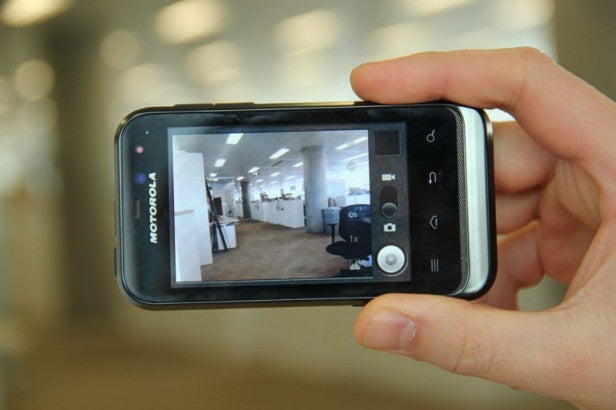
The main camera also boosts more than you might expect given the phone’s budget. It has a reasonably powerful LED flash and a shutter button that makes it easy to take shots with gloves on. However, quality is not all that clever, with blotchy low-detail pics the order of the day. Low light performance is particularly poor too.

We may not have had great weather recently but it wasn’t this dull in real life.

The flash is next to useless.
Verdict
The Motorola Defy Mini almost fulfils its remit as a small, cheap, rugged smartphone that’s ideal for camping, festivals or tearaway kids. However, its lack of true waterproofing, small screen and sluggish processor combine to leave us a bit underwhelmed. If your budget really is limited to around £150 then we’d suggest trying to find a larger Motorola Defy, or if you can stretch to just over £200 then the Motorola Defy+ is a much more accomplished handset all-round.
How we test phones
We test every mobile phone we review thoroughly. We use industry standard tests to compare features properly and we use the phone as our main device over the review period. We’ll always tell you what we find and we never, ever, accept money to review a product.
Trusted Score
Score in detail
-
Performance 5
-
Camera 5
-
Design 6
-
Usability 7
-
Value 7
-
Features 6
-
Screen Quality 6

